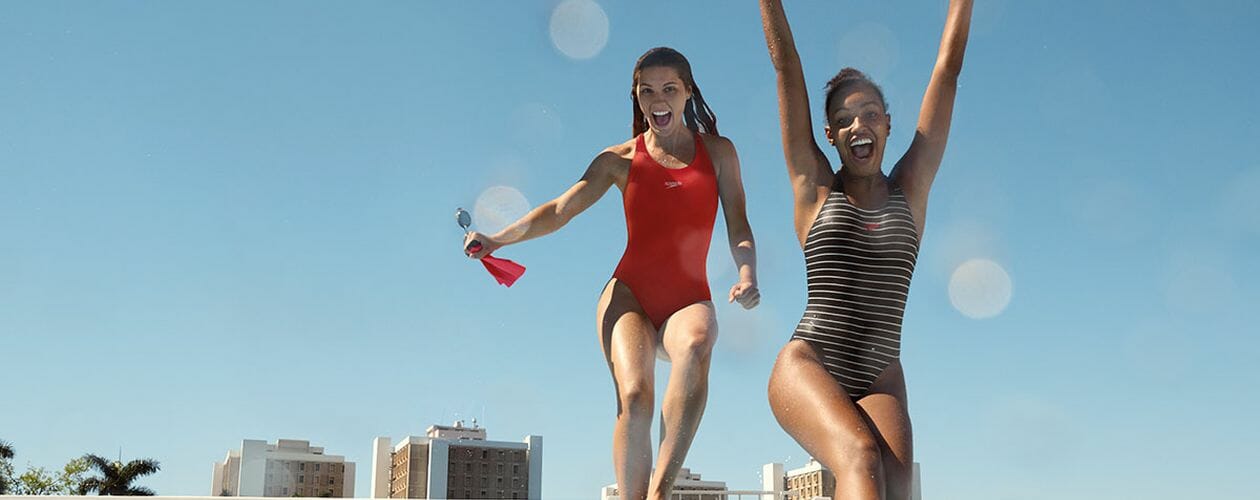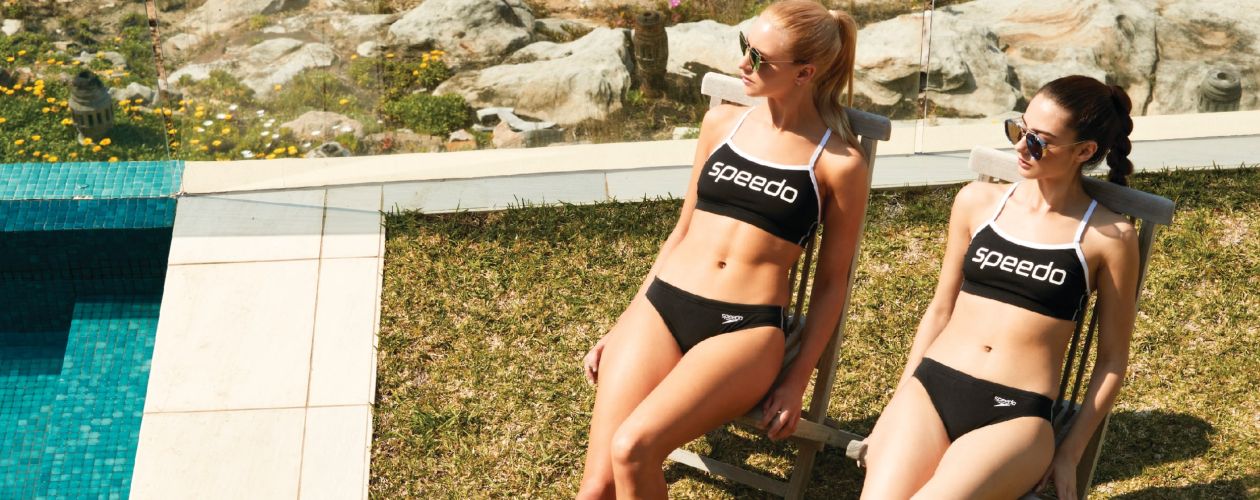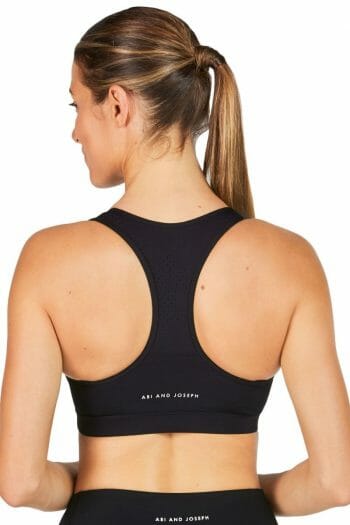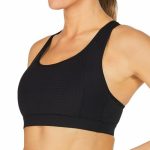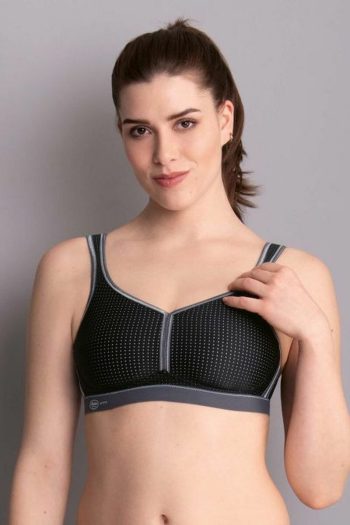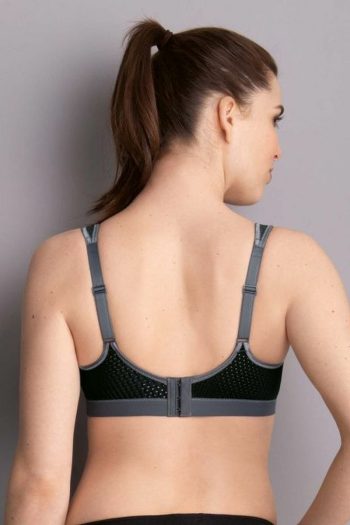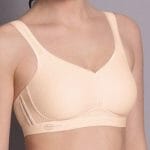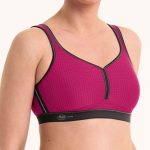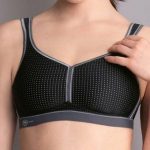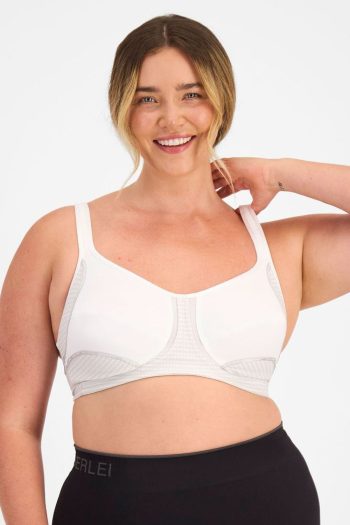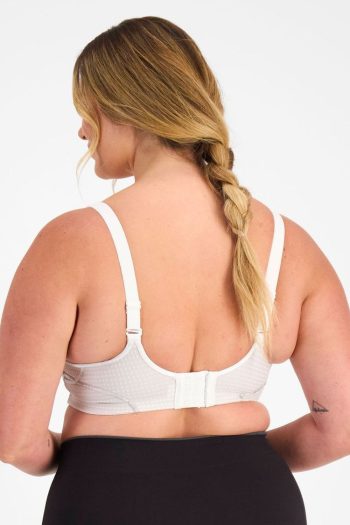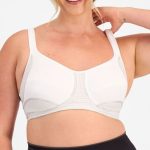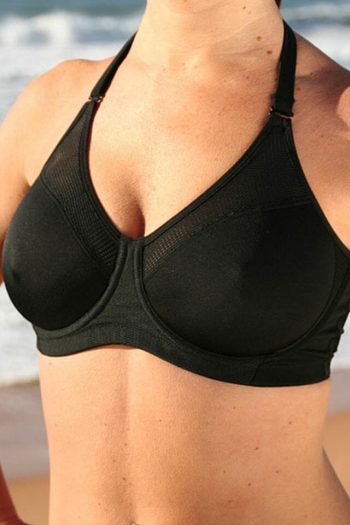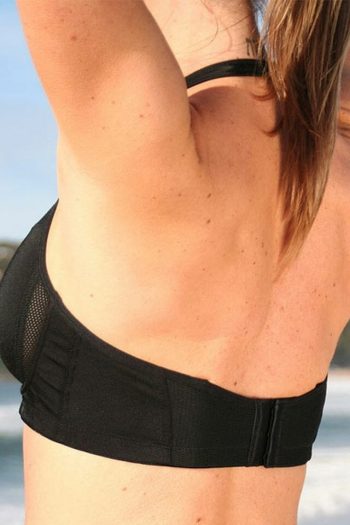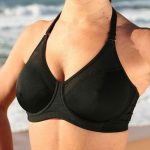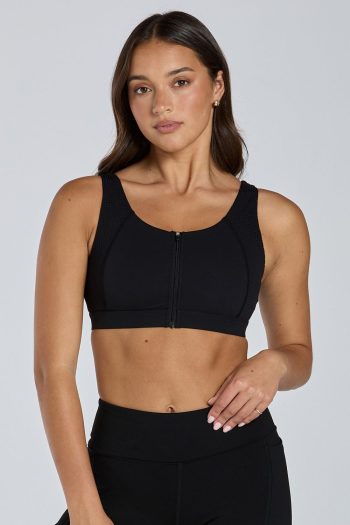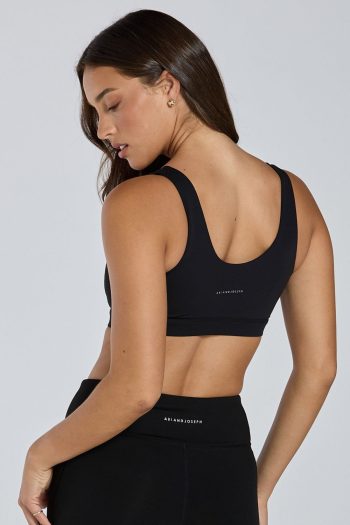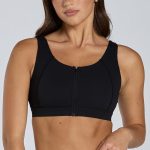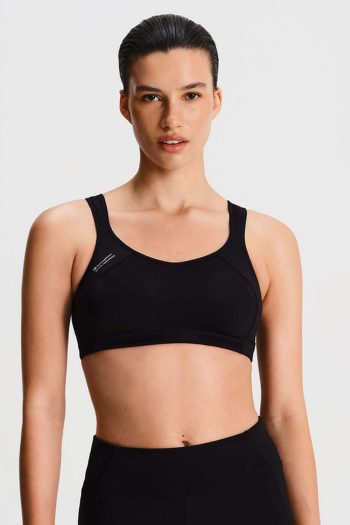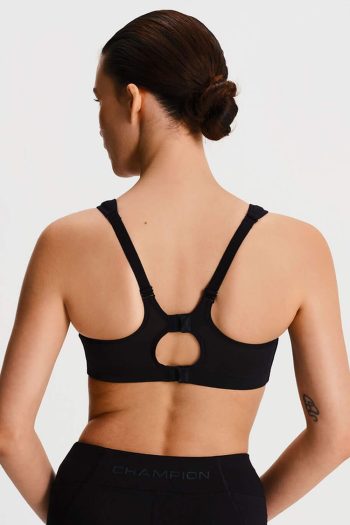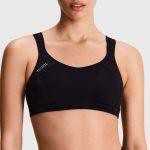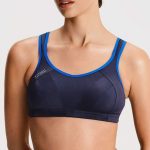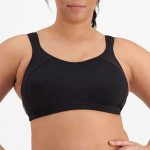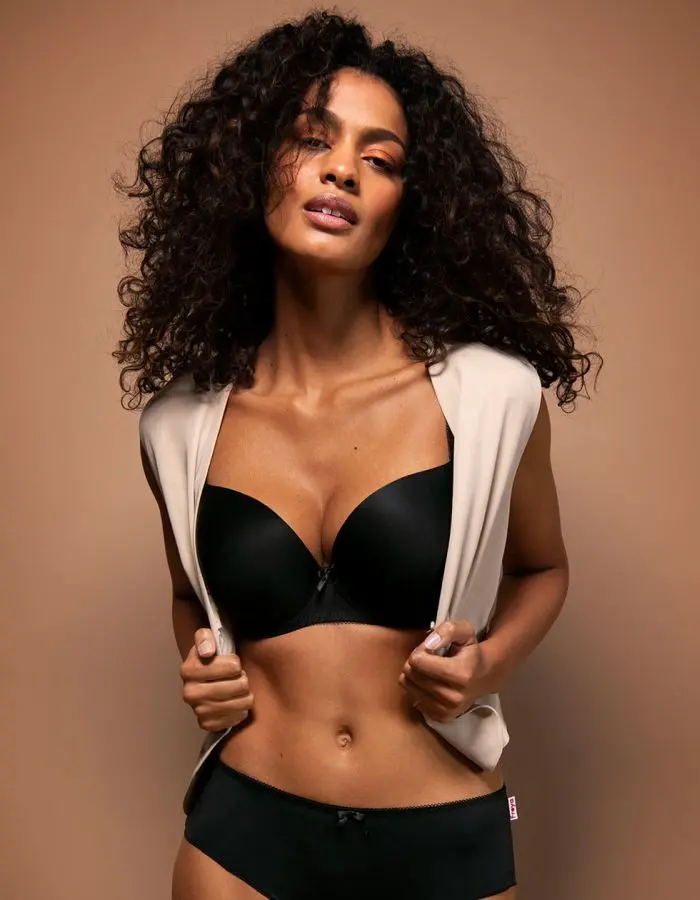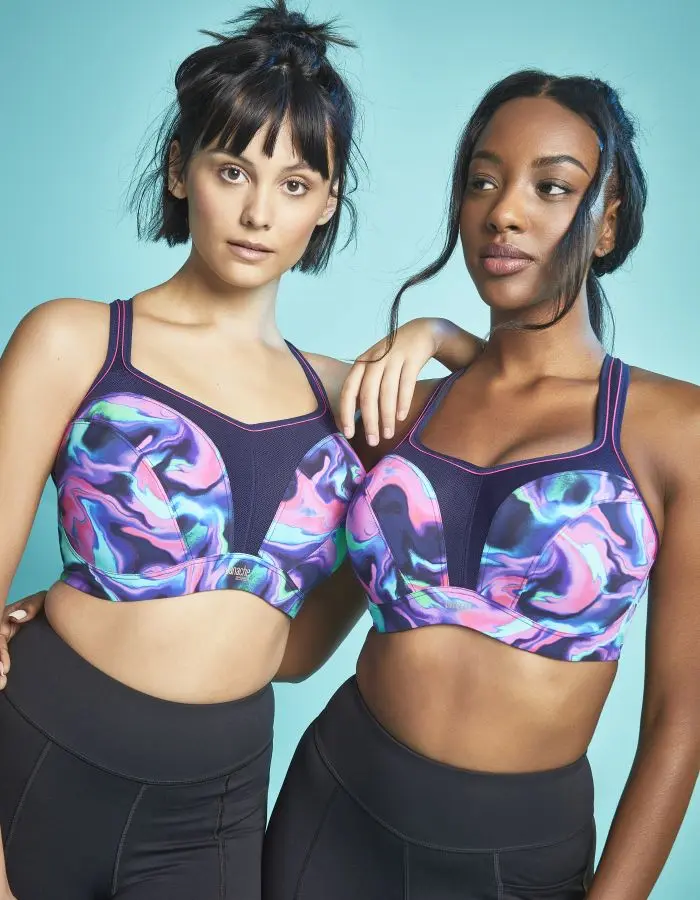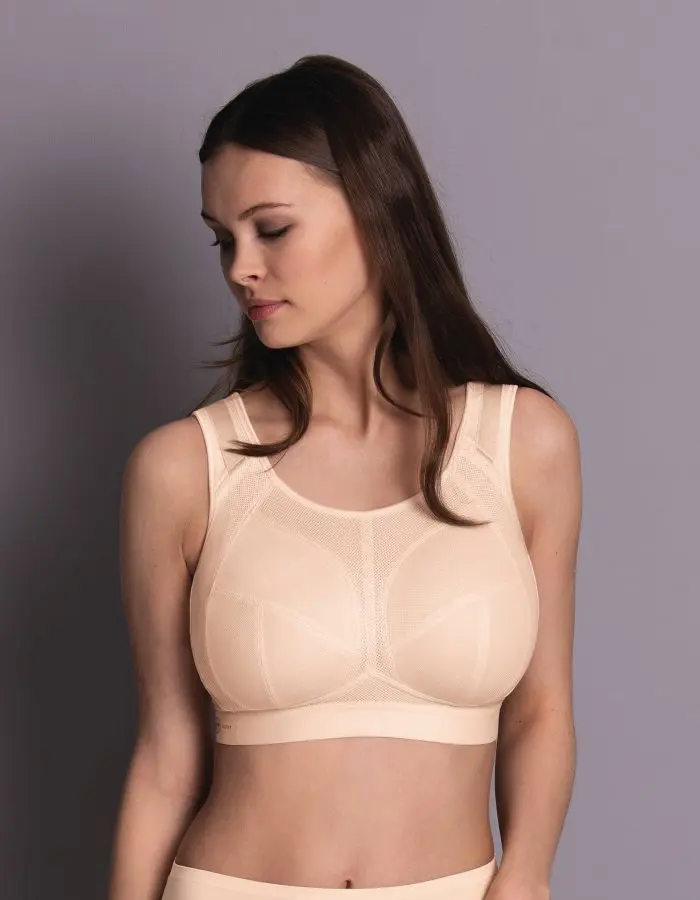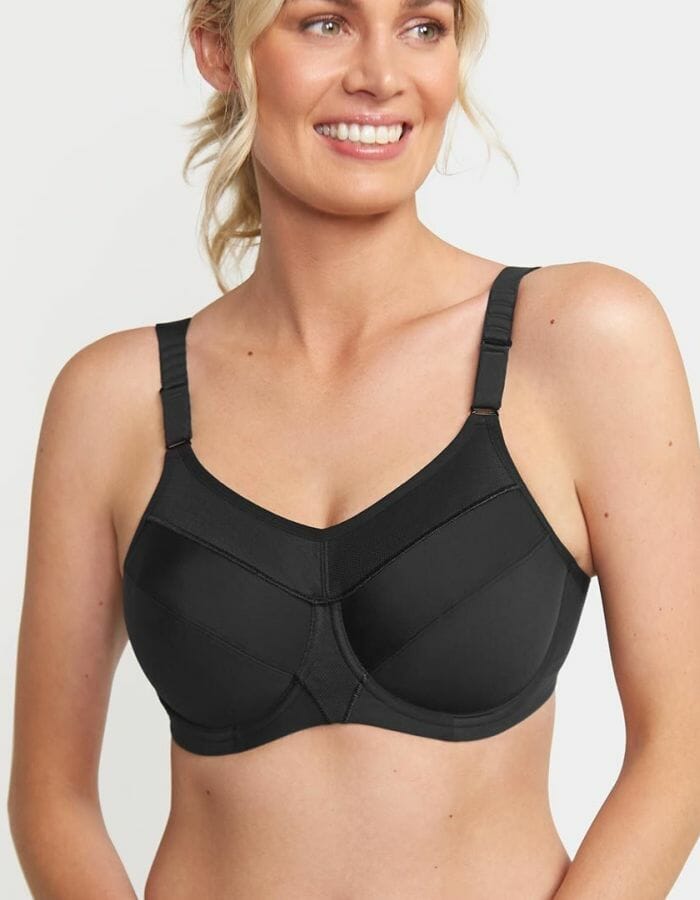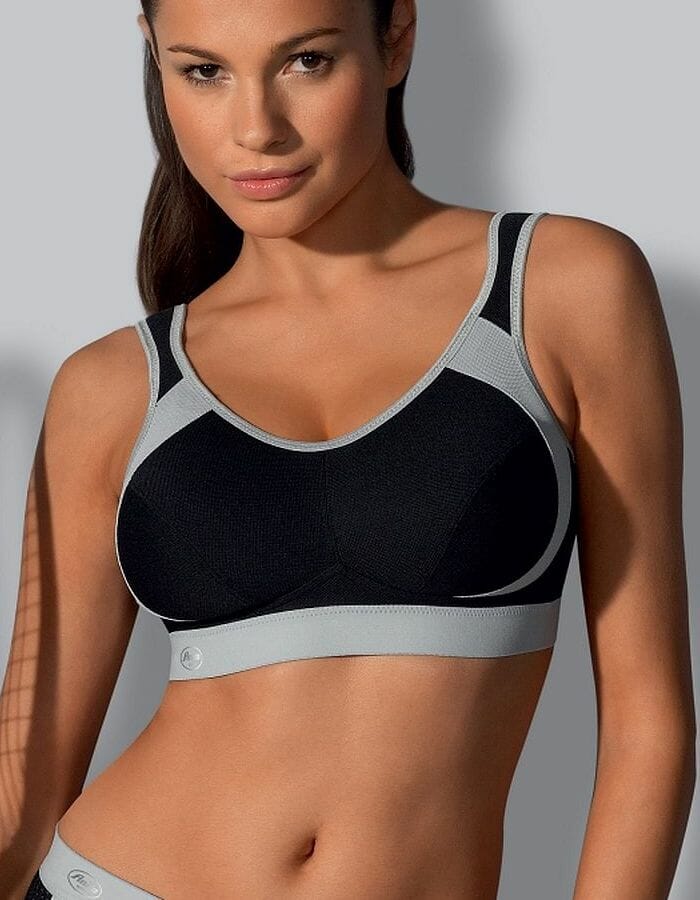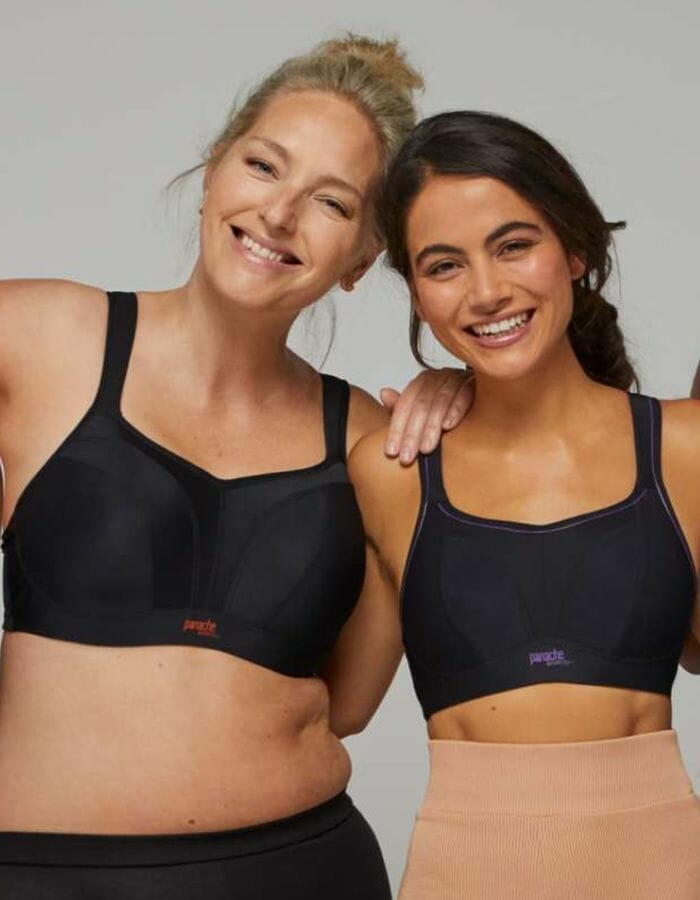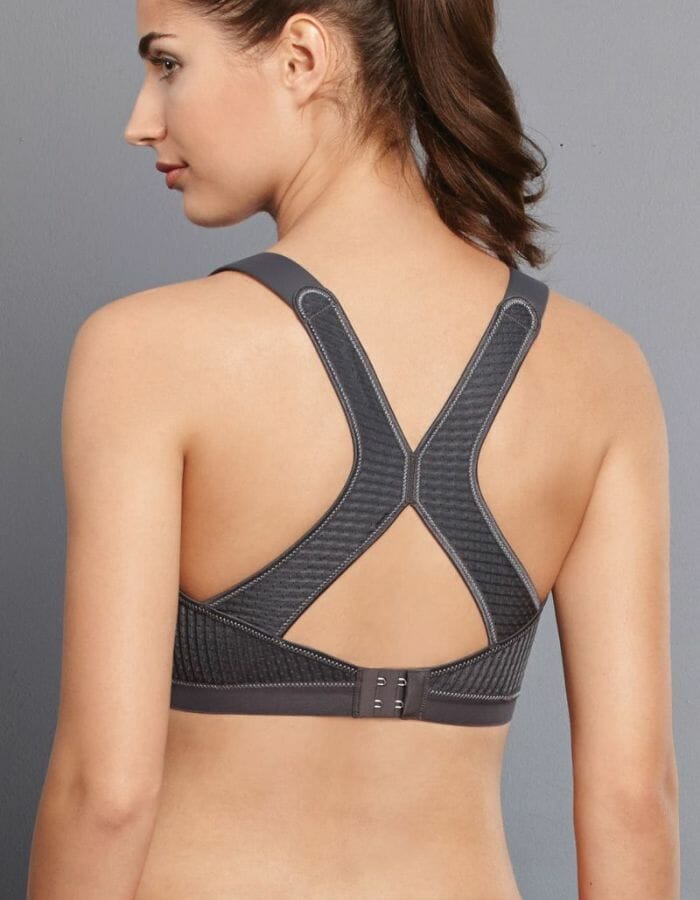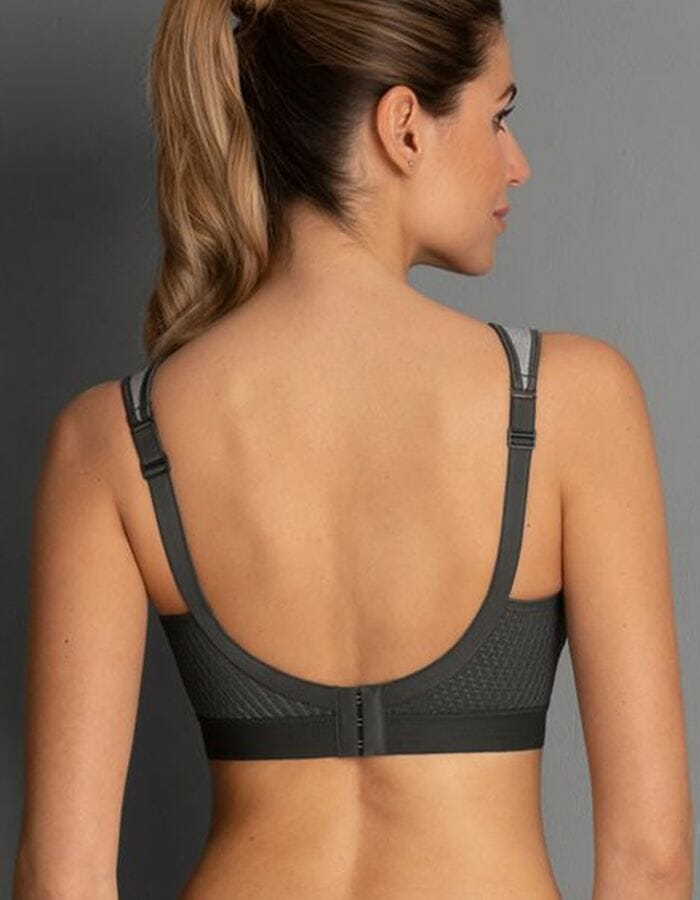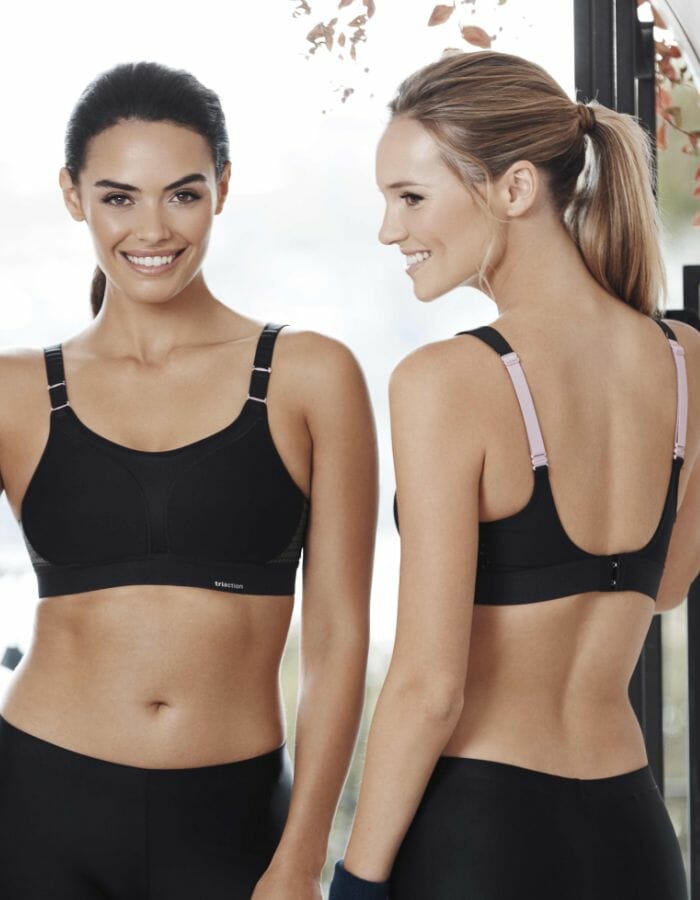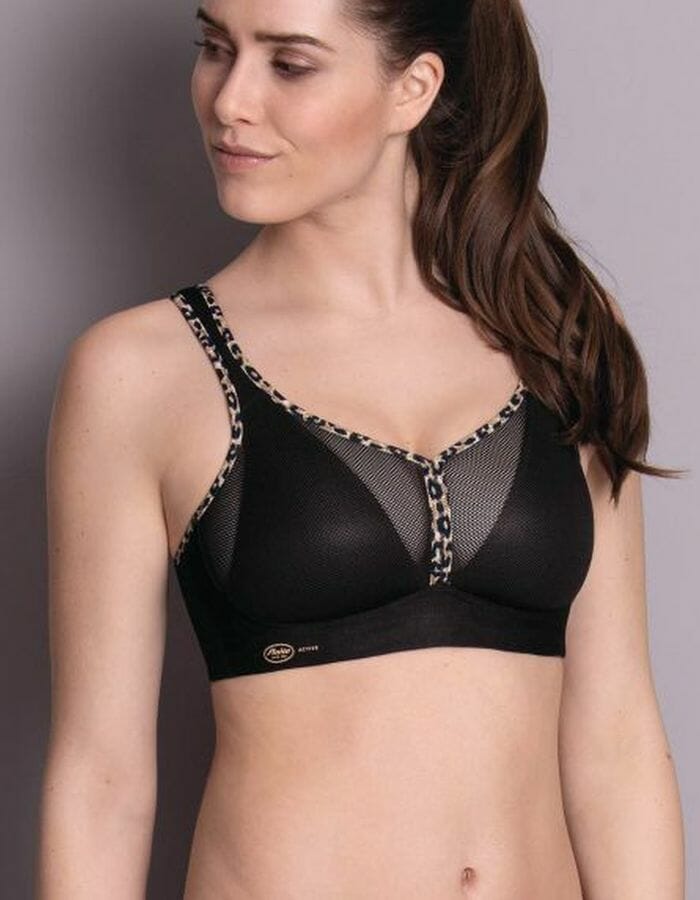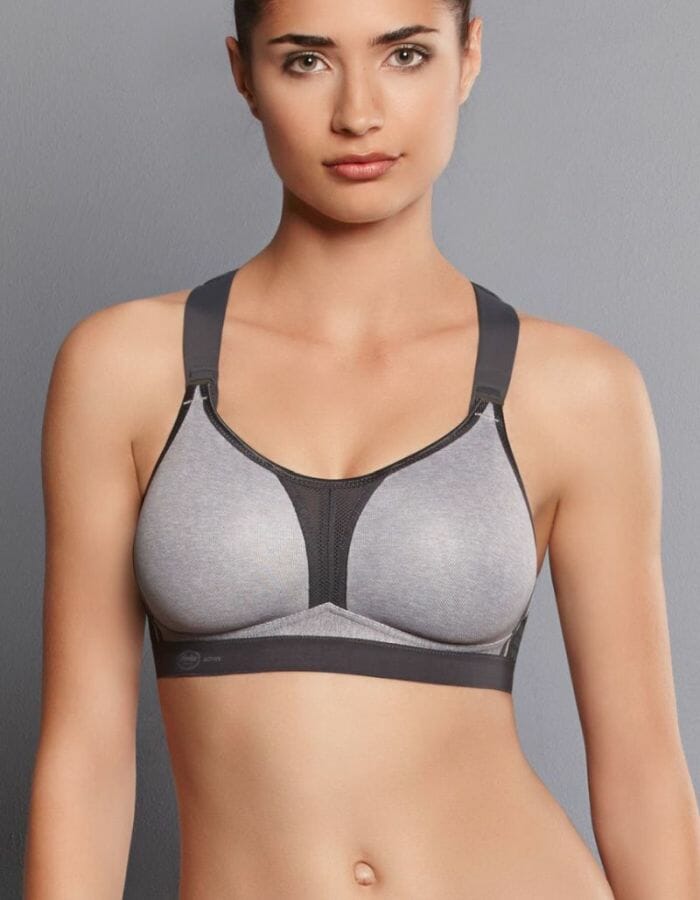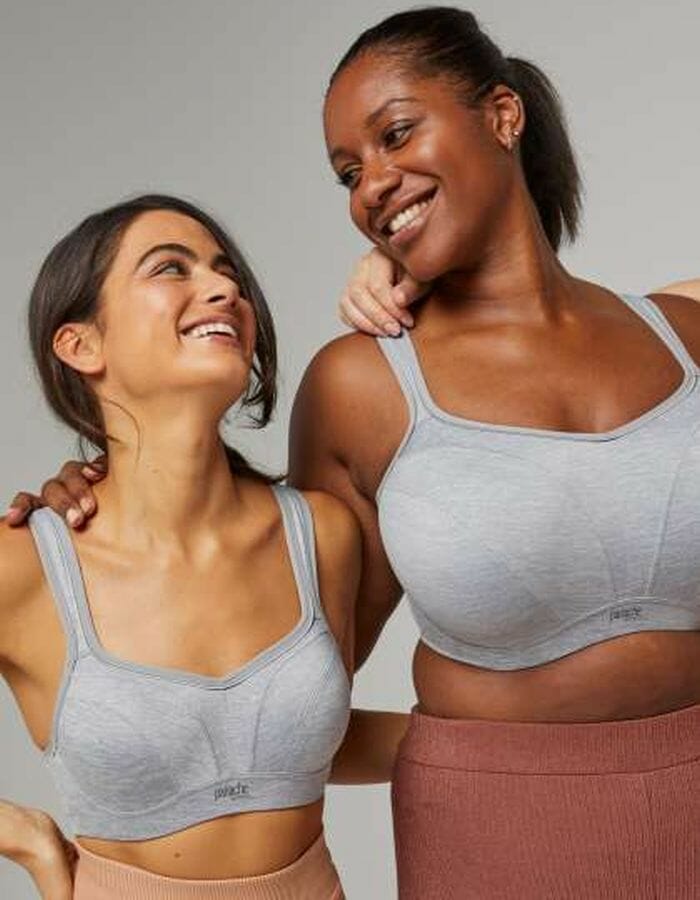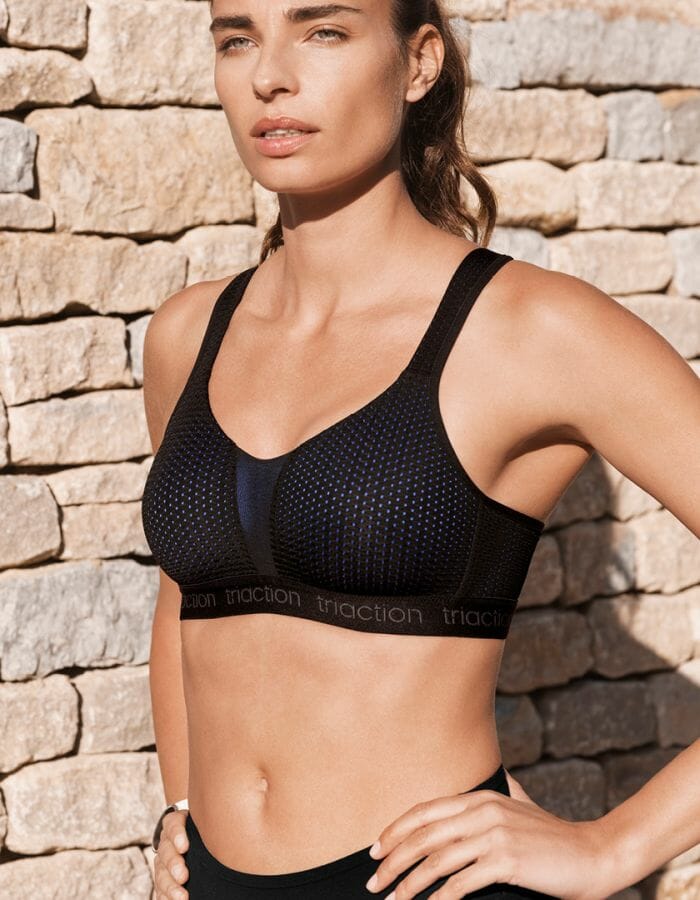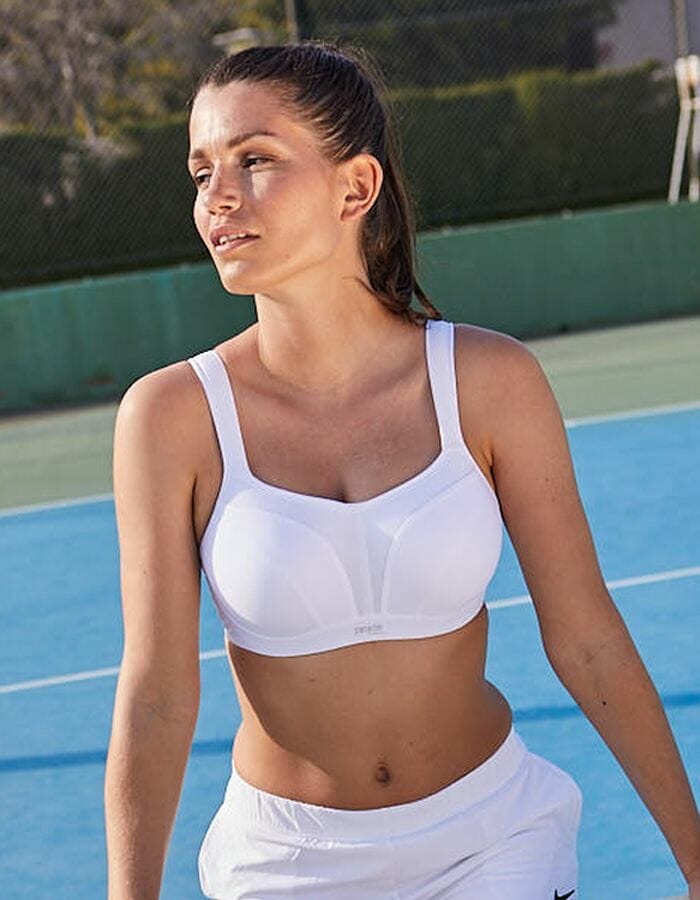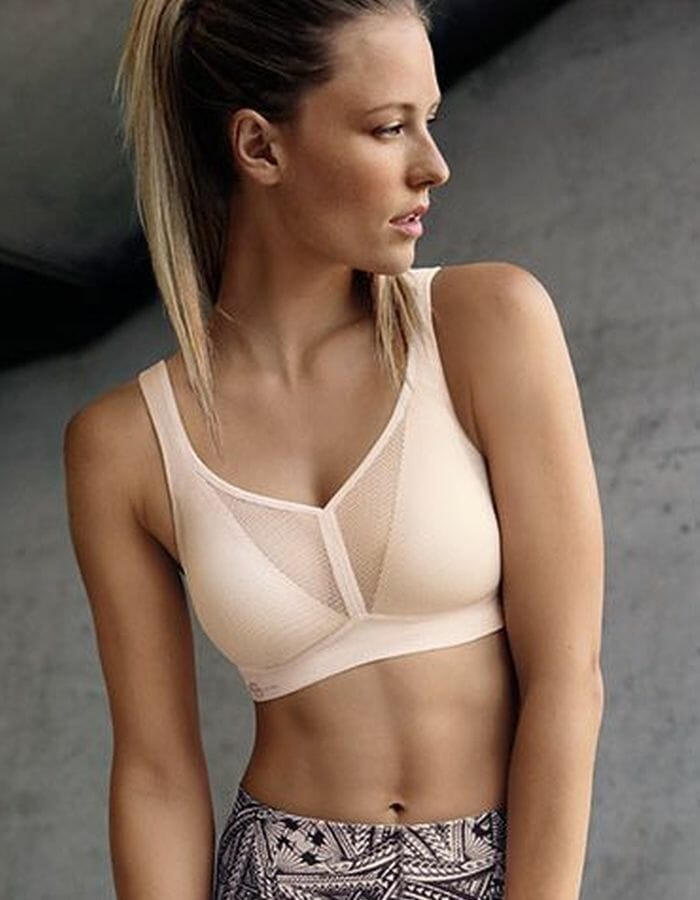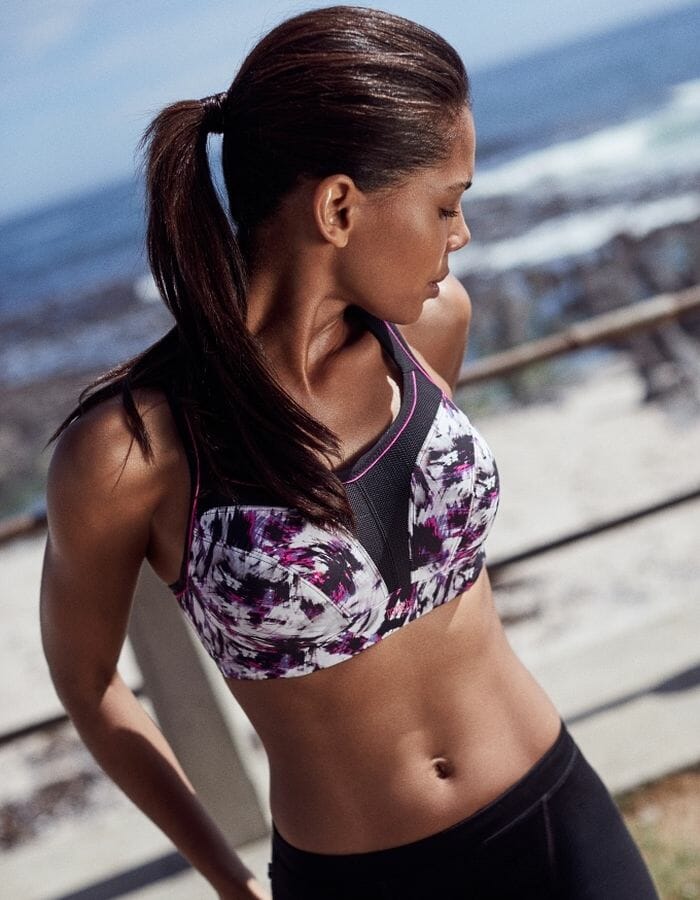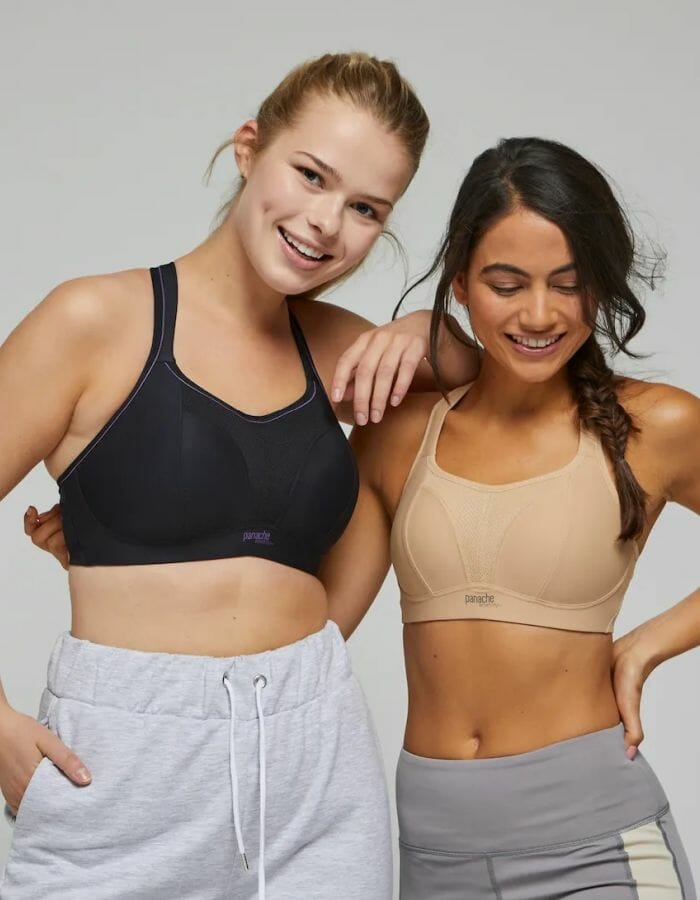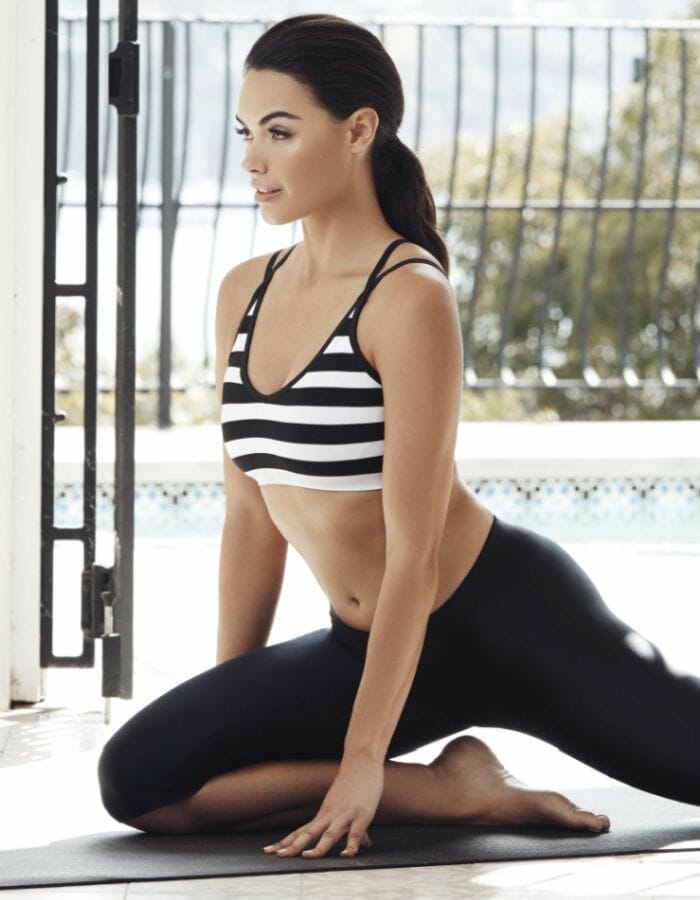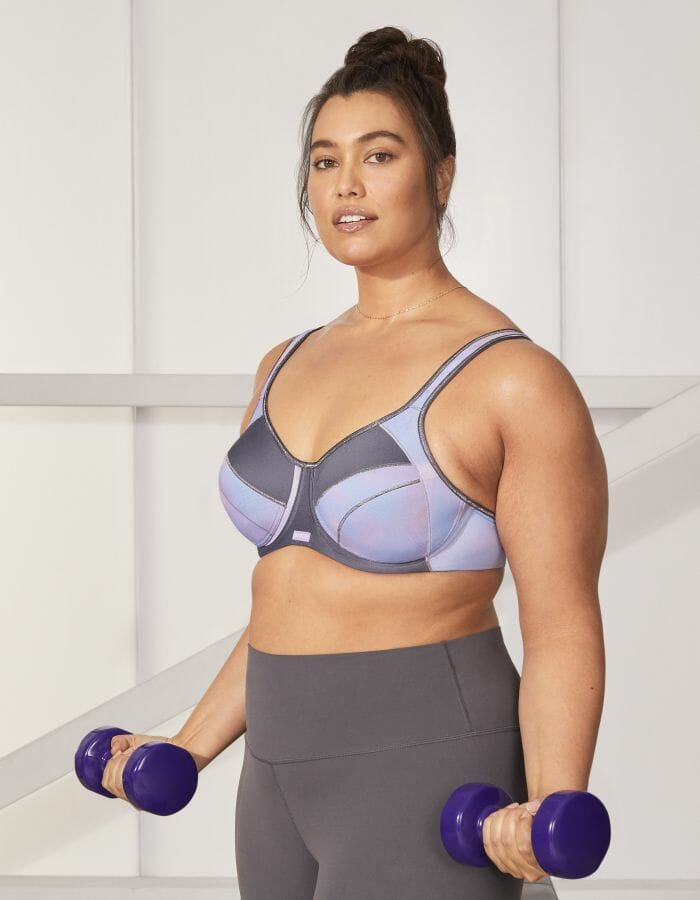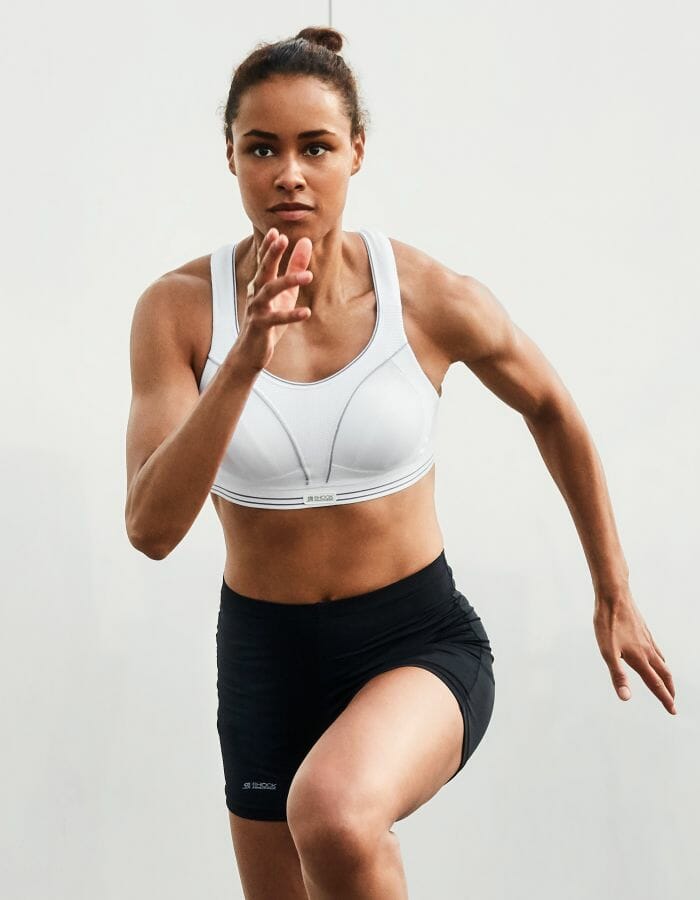Here are some common questions about swim bras (and their answers!):
Can I wear a sports bra for swimming?
Yes, in a pinch. But it depends on the materials and structure of that sports bra. A typical dry-land sports bra may become heavy, stretch out, or lose support when soaked. For casual, low-impact swimming, it might be okay. But for regular use, a proper swim bra or aquatic sports bra is better.
What’s the difference between a swimming sports bra and a regular sports bra?
A swimming sports bra is built with water in mind: chlorine resistance, faster dry times, secure structure underwater, and minimal absorbent padding. A regular sports bra is for sweat control, bounce, and comfort in air. It may not hold shape or support as well once saturated.
Do swimming sports bras dry quickly after getting wet?
Yes, that’s one of the big advantages. Most swim bras use materials and designs that shed water and allow airflow. Thin panels, perforated cups, mesh linings or low-absorbency fabrics help them dry faster than regular bras. But “quick” depends on environment — it may still take a little time in heavy humidity.
Are swimming sports bras supportive enough for active water sports?
They can be — if you pick one designed for high support. For active water sports (surfing, water aerobics, paddleboarding), choose a swim bra with strong compression, wide underbands, reinforced stitching, and secure straps. Don’t expect all swim bras to handle intense splash zones — check product specs and reviews.
Can I wear a swimming sports bra as a bikini top?
Yes, many people do. A well-designed swim bra can double as a bikini top, especially for moderate activities like sunning, light swimming, or beach volleyball. Just make sure it offers enough coverage, shape, and support for your comfort. If you’re going for full performance in the water, combine it with swim bottoms or a matching suit.

